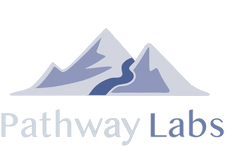Embarking on an educational journey is an exciting and transformative experience. Whether it's a high school graduate, an adult learner, or pursuing higher education, having an understanding of the student lifecycle is essential for school administration. This blog post will guide you through the various stages of the student lifecycle, shedding light on the important milestones, challenges, and opportunities that await students along the way.
Pre-Enrollment Phase
The student lifecycle begins with the “pre-enrollment phase”, where prospective students explore their educational options. During this stage, students research different schools, programs, and career paths. As a school administrator, you could refer to a person in this phase as a “lead” for the school.
Students in this phase are evaluating factors such as reputation, curriculum, campus facilities, and financial considerations. This phase also involves preparing for admission requirements, which may include standardized tests, essays, interviews, and recommendations. By carefully navigating the pre-enrollment phase, students can make informed decisions that align with their goals and aspirations.
As a school, it’s best practice to outline all requirements for students financially, professionally, and academically on your website. Students will want to be able to review all of these details to assess whether they’re a good fit for your school or particular program.
Enrollment Phase
Once a student applies and is accepted into your educational institution, students enter the “enrollment phase”. This stage entails formalizing their commitment to the chosen program or course. This could include signing acceptance letters or other administrative studies for the student.
During this phase, students typically register for classes, create schedules, and pay tuition fees. It is crucial to properly communicate academic policies, introduce academic advisors, and help students choose their course load appropriately in order for them to succeed at your school.
Additionally, during enrollment, students may have the opportunity to participate in orientation programs, campus tours, and connect with their peers if your student offers such things. By establishing a solid foundation and building early relationships in the enrollment phase, students are more likely to succeed and transition smoothly into their educational journey.
Learning and Development Phase
Once enrolled in their actual classes and program, students immerse themselves in the “learning and development phase”. This stage involves attending classes, engaging in coursework, completing necessary working hours and participating in various learning activities.
Students interact with instructors, collaborate with peers, and acquire knowledge and skills specific to their chosen field of study throughout this phase. It is important for students to actively participate in discussions, complete assignments on time, and seek help when needed. Additionally, this phase may present opportunities for internships, co-op programs, research projects, or extracurricular activities, all of which contribute to personal and professional growth.
As a school, it’s your responsibility to ensure students are being effectively trained throughout their program and learning all the necessary skills needed for their desired career path.
Assessment and Evaluation Phase
The “assessment and evaluation phase” focuses on gauging a student's progress and performance. Through quizzes, exams, projects, and presentations, students are evaluated on their understanding of the material and their ability to apply it. These phase usually consists of some sort of grading component to evaluate if a student is absorbing the curriculum and material.
It is important for students in this phase to receive feedback from instructors. This can play a crucial role in identifying strengths and areas for improvement and set students up for success in their future careers. This phase also helps students develop critical thinking, problem-solving, and analytical skills.
As a school, it’s also important to listen to students’ wants and needs. You should regularly poll and survey students on their chosen program to learn if they are enjoying their experience, feeling prepared for their future career, or if they have other recommendations for the school. With a tool like MyPath, you can fully automate this surveying process and hear from students in real time.
Transition and Graduation Phase
As students approach the end of their educational journey, they enter the “transition and graduation” phase. This phase involves preparing for the transition from student life to the next stage, whether it be further education, entering the workforce, or pursuing entrepreneurial endeavors.
For those completing a degree program, graduation ceremonies are a significant milestone, celebrating their achievements. As a school, you should aim to have some sort of event to recognize graduates and their success in their chosen program.
During this phase, schools can aid graduates in job searches, networking events, and interview preparation to help them secure employment post graduation. Not only can this be rewarding for the student, as a school, it comes off well when you can say the majority of your students have secured a job placement after completing their program at your school.
The Complete Student Lifecycle
The student lifecycle encompasses a series of interconnected stages, each contributing to the growth, development, and success of students. By understanding and actively engaging with each phase, students can make the most of their educational journey. From the initial research and application process to the ultimate transition into the professional world, understanding the student lifecycle equips schools with the knowledge on how to improve each phase of their students.
If you’re looking to optimize and streamline much of this lifecycle, we recommend checking out Pathway Labs. With MyPath, vocational schools are able to effectively manage the student lifecycle from admissions to graduation, all within one platform. Click here to learn more about Pathway Labs!

